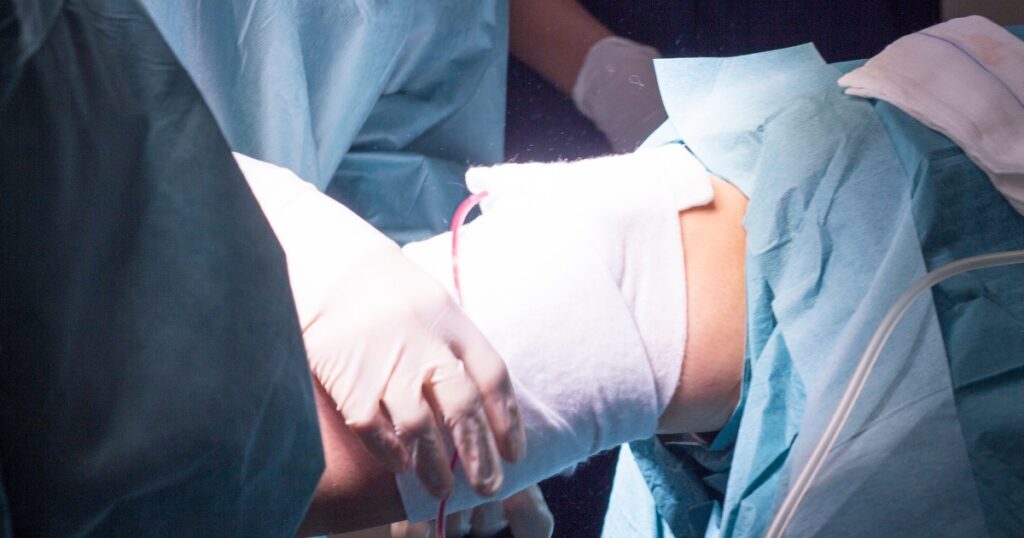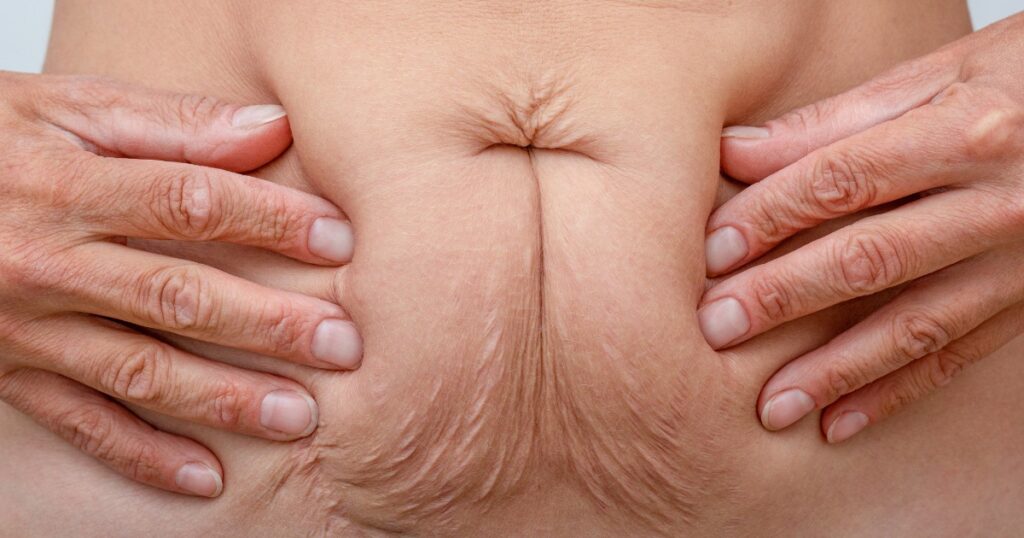Liposuction is a popular cosmetic procedure for removing fat. However, as with any surgical procedure, it comes with inherent risks and complications.
The side effects of liposuction, along with the cost of anaesthesia, are all broken down here. Understanding the risk of liposuction is crucial for anyone contemplating this surgical option.
Anaesthesia Risks
Liposuction, like many surgical procedures, requires anaesthesia. However, the risk of allergic reactions and respiratory issues must be considered. Occasionally, anaesthesia can cause life-threatening complications.
| Risk Factor | Description | Management Strategy |
| Allergic Reactions | Skin rashes or difficulty breathing | Immediate medical attention, antihistamines |
| Respiratory Issues | Respiratory depression affects breathing | Monitoring, respiratory support |
| Cardiovascular Risks | Fluctuations in heart rate or blood pressure | Monitoring, medication |
| Cognitive Effects | Temporary cognitive impairment | Time, monitoring |
| Nausea | Postoperative nausea | Antiemetic medication |
| Drug Interactions | Interaction with other medications | Careful medication review |
| Mortality | Extremely rare but possible | Emergency intervention |
Infection Post-Surgery

Infections are a common concern following any surgical procedure. Bacteria can enter the surgical site despite sterile conditions, leading to complications. Severe infections may require additional surgeries and prolonged antibiotic treatment.
Book A Consultation With Dr Tarek Bayazid
Top-rated Plastic Surgeon For Liposuction in Dubai
Installment Plan Available
- Bacterial Infections: Staphylococcus and Streptococcus are common bacteria that can cause post-surgical infections.
- Antibiotic Resistance: Overusing antibiotics can lead to resistance, making infections more challenging to treat.
- Localised Swelling: Post-liposuction swelling and redness at the surgical site are often signs of infection.
- Fever: Elevated body temperature is a common symptom of infection.
- Pus Formation: In severe cases, pus may form at the surgical site, requiring drainage.
- Additional Surgeries: Infections may necessitate further surgical intervention.
- Long-term Antibiotic Use: Severe infections may require prolonged antibiotics.
Blood Clots and Embolism
Blood clots are a serious concern in any surgical procedure. In liposuction, clots can form in the legs and travel to the lungs, causing a pulmonary embolism. Medical attention is required immediately for this life-threatening condition.
- Deep Vein Thrombosis (DVT): Blood clots often originate in the deep veins of the legs.
- Pulmonary Embolism: Clots can travel to the lungs, causing severe respiratory distress.
- Anticoagulant Therapy: Patients may need blood thinners to prevent clot formation.
- Compression Stockings: These can help improve blood flow and reduce the risk of clots.
- Physical Activity: Early mobilisation post-surgery can help prevent clot formation.
- Symptom Recognition: Shortness of breath, chest pain, and leg swelling are signs of a potential embolism.
- Immediate Treatment: Quick medical intervention is crucial for survival.
Fluid Imbalance
The removal of fat and fluids during liposuction can sometimes lead to an imbalance in fluid levels in the body. A hypovolemic or electrolyte imbalance can occur as a result. Severe cases may require hospitalisation for fluid replacement and monitoring.
| Complication | Symptoms | Treatment Strategy |
| Hypovolemia | Dizziness, fainting, shock | IV fluids, monitoring |
| Electrolyte Imbalance | Heart or kidney function issues | Electrolyte replacement |
| Tissue Edema | Swelling | Diuretics, compression |
| Kidney Function | Reduced waste filtering | Monitoring, medication |
Skin Irregularities and Discoloration

Liposuction can sometimes result in uneven skin texture or discolouration. Factors like the surgeon’s expertise and the patient’s skin elasticity can influence the outcome. Treatment for these issues may involve additional procedures or topical treatments.
- Lumpiness: The treated area may appear lumpy or wavy due to uneven fat removal.
- Hyperpigmentation: Skin darkening can occur due to inflammation or bruising.
- Hypopigmentation: Lightening of the skin is also a possible side effect.
- Skin Sagging: Reduced skin elasticity can lead to sagging post-procedure.
- Topical Treatments: Creams and ointments may be prescribed to improve skin texture.
- Additional Procedures: Further surgical or non-surgical treatments may be needed to correct skin irregularities.
- Patient Satisfaction: These issues can significantly impact patient satisfaction and self-esteem.
Nerve Damage
Nerve damage is a potential risk in liposuction, leading to numbness or tingling sensations in the treated area. While most cases are temporary, some may result in permanent nerve impairment. Early intervention can help in managing symptoms.
| Type of Damage | Symptoms | Management Strategy |
| Temporary Numbness | Loss of sensation | Time, monitoring |
| Tingling Sensations | “Pins and needles” | Medication |
| Permanent Damage | Persistent numbness or pain | Physical therapy, medication |
Scarring and Keloids
Scarring is an inevitable part of any surgical procedure, including liposuction. While most scars fade over time, some individuals may develop keloids, which are raised, thickened areas of scar tissue. Treatment for keloids can be challenging and may require additional procedures.
- Incision Scars: Small scars from surgical incisions are common and usually fade over time.
- Keloid Formation: Some individuals are prone to developing raised keloids that can be itchy or painful.
- Hypertrophic Scars: These are thickened but not raised and can cause discomfort.
- Scar Treatments: Topical creams, laser therapy, and surgical removal are options for treating scars.
- Genetic Predisposition: Some people are genetically more likely to develop keloids.
- Cosmetic Concerns: Scarring can be a significant cosmetic issue, affecting patient satisfaction.
- Additional Procedures: Further surgical or non-surgical treatments may be needed to address scarring.
Hematoma and Seroma
Hematomas and seromas are collections of blood or fluid that can occur post-surgery. While generally not life-threatening, they can cause discomfort and may require drainage. Left untreated, they can lead to infection or other complications.
- Hematoma Identification: Hematomas are usually identified as localised, painful swelling.
- Seroma Symptoms: Seromas are softer and filled with clear fluid, often appearing several days post-surgery.
- Drainage: Both conditions may require surgical drainage to relieve symptoms.
- Infection Risk: Untreated hematomas and seromas can become infected.
- Ultrasound: Imaging studies may be used for diagnosis.
- Antibiotics: These may be prescribed as a preventive measure against infection.
- Monitoring: Regular follow-up appointments are crucial for early detection and treatment.
Psychological Effects

The psychological impact of liposuction should not be underestimated. While many patients report increased self-esteem, others may experience depression or anxiety post-surgery. Psychological support is essential for a full recovery.
- Body Dysmorphia: Some individuals may still perceive themselves as overweight despite successful surgery.
- Depression: Post-surgical depression is a concern and may require treatment.
- Anxiety: Concerns about the outcome or potential complications can lead to stress.
- : Unrealistic expectations can result in dissatisfaction.
- Counselling: Psychological counselling may be beneficial for some patients.
- Support Network: A strong support network can aid in emotional recovery.
- Long-term Impact: The psychological effects can have a long-lasting impact on quality of life.
Financial Risks
Liposuction is often considered a cosmetic procedure and may not be covered by insurance. The cost of liposuction can be substantial, particularly when you factor in potential complications or additional follow-up treatments.
| Financial Factor | Description | Potential Impact |
| Out-of-Pocket Costs | Expenses not covered by insurance | High financial burden |
| Follow-up Treatments | Additional procedures | Increased overall cost |
| Financing Options | Clinic-offered plans | High-interest rates |
While liposuction offers a quick and effective solution for fat removal, it is essential to be aware of the associated risks and complications. A comprehensive overview of what patients should expect, from anaesthesia risks to nerve damage and financial burdens, has been provided in this article.
Being well-informed about the risks of liposuction can help individuals make educated decisions and prepare for potential outcomes.
Are you ready to take the next step towards a more sculpted you? Knowledge is the first step to making an informed decision. If you have further questions or want personalised advice, don’t hesitate to Book a Consultation with Dr Tarek Bayazid. Our team of experts is here to guide you through every aspect of the procedure, ensuring your safety and satisfaction.
The Risk of Liposuction – FAQs
What are the most common risks and complications of liposuction?
The most common risks include anaesthesia risks, infection post-surgery, and fluid imbalance. Complications can range from mild issues like skin irregularities to severe problems like blood clots and embolism.
How can I minimise the risks and complications of liposuction?
Consulting with a qualified and experienced surgeon can significantly minimise risks. Preoperative tests, careful monitoring during and after the procedure, and following post-operative care guidelines are also crucial.
Are anaesthesia risks common in liposuction?
While anaesthesia risks are generally low, they can include allergic reactions, respiratory issues, and, in rare cases, life-threatening complications.
What are the financial risks associated with liposuction?
Insurance often does not cover liposuction, making it a significant financial investment. Additional costs can arise from complications requiring further treatment.
Can liposuction lead to psychological effects?
While many report increased self-esteem, some individuals may experience depression or anxiety post-surgery. Psychological support is essential for a full recovery.







